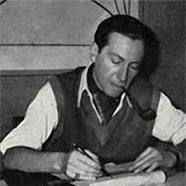The biography of Jean Quinet

Born in 1981 In 1937, Jacques Quinet’s illustrious career commenced when his father-in-law appointed him manager of the family’s furniture store. Had set a shop as a decorator on the Rue de la Pompe by 1941. His first large-scale job came in 1943 when he outfitted the offices of the Parisian company Krema.
Because of his close proximity to the well-known professionals and furniture makers of the Faubourg Saint-Antoine, particularly the ébéniste François Sebesta, who shared with Quinet a great deal of his knowledge about carpentry, Quinet’s enthusiasm for design was so enhanced that by the middle of the 1940s, he had enrolled in design classes and was producing his own furniture.
Quinet was counterbalanced by much more notable victories in the WWLL’s conclusion. He completed his studies, graduated, and returned to work with a fervor; in addition, he had a plethora of large-scale, productive jobs added to his resume, along with a variety of configuration work to show for it. He faced another formidablely famous Parisian designer. Acknowledged as one of the most skilled designers and furniture makers in the city, he gradually gained the backing of the wealthiest and most perceptive citizens.
The most notable goal he set for himself was to become a great stylist. Quinet was drawn to the bold, tasteful neoclassicism; nonetheless, what distinguished him from the others was the manner he turned this inspiration into something succinct. and today.
He rejected ornamentation in favor of a flawless form that made the fine neoclassical style seem unweighted. Quinet, who preferred expensive woods (such as cherry, sycamore, and mahogany), bronze, and veneer finishes, fully kept basic elements like shade and materials. Because of his unique technique, he was able to establish a style that would be recognizable for a very long time.
He was interested in many important presentations, most notably the Décorateurs, Art et Industrie, Salon des Artistes Siège au Pavillon de Marsan.
In 1951
He created and decorated General Eisenhower’s residential quarters. In 1955 and 1965, he also worked at Beghin-Say, Air France, and La Societé des Eaux d’Evian’s corporate offices in Marne-la-Coquette. A large portion of the apartments on board the steamships La Bourdonnaise and 1953 in France. After working on the critically praised Hotel Plaza Athénée in 1968 and The Pasteur in 1966, he shifted a significant portion of his consideration toward trains. In the interest of the SNCF, the original provider provided trains in Morocco, Egypt, and the Ivory Coast between 1970 and 1977.
He was made a Chevalier des Arts et des Lettres and awarded the Légion d’Honneur prior to his death in 1992.
 Skip to content
Skip to content
Very interesting topic, regards for putting up.Blog money